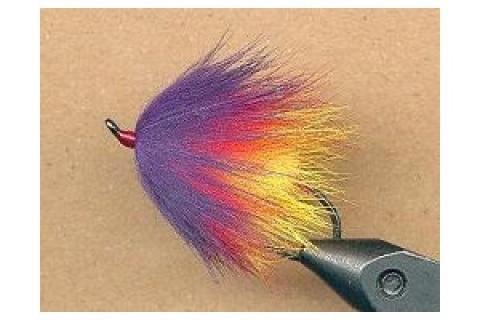
 Seeing as fly tying season is in full swing, I think it is a good idea to take a closer look at one of the most important components of a fly: the hook. In most cases people don't pay any attention to the hooks they use in their flies, maybe thinking that the quality is consistent among the many different brands. It absolutely is not. Fly tying hooks vary greatly on strength, shape and sharpness. Don't be fooled, with internet specials and discount packs, you are entrusting your entire day or trip to that hook holding in the fishes mouth. A sturdy shank or a sharp point could have been the difference with the big one that got away.
Seeing as fly tying season is in full swing, I think it is a good idea to take a closer look at one of the most important components of a fly: the hook. In most cases people don't pay any attention to the hooks they use in their flies, maybe thinking that the quality is consistent among the many different brands. It absolutely is not. Fly tying hooks vary greatly on strength, shape and sharpness. Don't be fooled, with internet specials and discount packs, you are entrusting your entire day or trip to that hook holding in the fishes mouth. A sturdy shank or a sharp point could have been the difference with the big one that got away.
To tell the truth, my vice sees hundreds of hooks each year. I have been a commercial tier for the last 15-plus years and before I switch to a new brand of hook I put them through a small series of validation tests to know the flies I tie will be quality. Before the hooks ever reach my vice, the first thing I do is look at the hooks for flaws. The normal process for me is to spread out the hooks (I personally like working with hundred packs) on a white piece of paper. I try and look through as many of the hooks as possible for blemishes in shape or construction.
If I am going to be tying a scud pattern that uses a bent hook I want all the hooks to have the exact same shape. Hooks need to be consistent. I also look to see that the eye loop is closed all the way and that no metal burs exist on the finish. Again I am pretty particular in the hooks that I use but if I find 3 or more blemished hooks per pack I will not go back to that brand. The second test I like to do with hooks is to see their respected strength and wire temper. To do this clamp the hook into the vice at the hook bend and grab the end with the hook eye with a pair of pliers. A quality hook should be able to be bent (not easily).
With poorly constructed hooks, as you put pressure on the shank through flexing, the hook will actually snap in two. These brittle hooks can catch fish, but removing the fly from the fish's mouth can be a problem. As you torque on these hooks with a hemostat to remove them, you will break off the hook bend. Nothing is worse than having your go to fly break right as the fishing is turning on. The last test I like to do with fly hooks that goes along with the brittleness of hook is the barb crush test. To do this test simply crimp down the barb on the hook with a pair of pliers. If the barb crushes down smoothly without a cracking, then the hook can be generally regarded as quality. If the point cracks off, they should be looked upon with caution as the hook point will also be suspect.
Don't be afraid to venture out and try some of the many different hook brands available to find what you are looking for. Although some of the bigger brand named companies like Mustad, Teimco and Daiichi have very good reputations; some of the newer fly fishing companies are also producing very high quality hooks. Shadow Fly Fishing is such a company and the hooks that they are producing cover wet flies, dry flies, and nymphs. These hooks are strong, sharp and durable and will be able to handle the shock of aggressive fish.
If you want to get the most out of your time behind the vice and on the water use the highest quality hooks you can afford. Tying on quality hooks guarantees that no matter what the conditions may be you will get consistent results from your flies time after time.
- 3564 views

